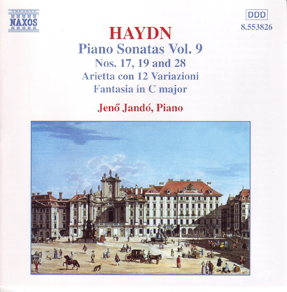Share |
Music: What’s in a Name?
By Frank Behrens
ART TIMES July/ August 2011
 |
According to Mark Twain, Eve named a dodo a dodo, because “It looks like a dodo.” In a more serious vein, Juliet realized that “a rose by any other name would smell as sweet.” There is little doubt that no one would confuse Eve’s animal with any other; and nobody familiar with horticulture would mistake a rose for any other blossom.
The world of music, however, is filled with words that court confusion. One reason is that their definition has changed throughout the passing years. Another is that the context determines the definition. Take, for a nonmusical example, the word “read.” Out of context, it can be pronounced “reed” or “red.” But in a sentence, “Today I read” and “Yesterday I read” quickly the context supplies the pronunciation and definition.
Actually, my favorite is POLISH. When seen in upper case, it can mean “to cause something to shine by rubbing it (polish)” or “being a native of Poland” (Polish)? Context and capitalization will tell.
Now let us look at a musical example that had me very confused when I was a youngster trying to plumb the mysteries of classical music. That word was “sonata.”
What exactly is a “sonata”? Here we have a word that has only one pronunciation but two overlapping definitions that can cause some confusion among those who not music specialists. My 1980 edition of “The New Grove Dictionary of Music and Musicians” devotes pages 479 to 507 to a definition—or rather a series of definitions—of “sonata” from the 13th century to the modern era. Originally, “sonnade” referred to any instrumental music. Not very helpful, but a start.
Then the author says that the article will follow a “semantic” approach rather than a musicological one and show how the word was applied by composers through the Baroque, Classical, Romantic, and 20th-century eras. I believe that the Classical and Romantic “sonata” will deal with more familiar examples than will the other two.
Basically, Beethoven’s piano sonatas (piano only), and Mozart’s violin sonatas (violin and piano), and Haydn’s string quartets (4 instruments), for example, are multi-movement pieces, in which at least the first movement is in “sonata” form! Okay, here we go. There is a form called “sonata” that must appear in the first movement of a work called a “sonata.” But what is the form as opposed to the entire work?
At this point, I must beg musicologists to forgive what will seem to them an oversimplification of a fairly complex subject.
Some music teachers describe the form as pretty much this: say it, develop it, say it again. (To any teacher of English composition, that is very close to “introduction-body-conclusion.”) The composer chooses a theme in a particular key and one or more other themes in related keys. This is the “exposition.” The “development” brings back themes from the exposition on a voyage through different keys, setting things up for the “recapitulation” and final section. Here the first theme is replayed in its original key, some other themes are repeated in the same key (“tonic”) of the first theme. Then things are brought to a satisfying “coda” (literally “tail”) for the piece.
This is the usual format and was therefore expected by audiences when the works were first heard. Of course, the composer was allowed some leeway, but the tripartite structure was inviolate.
So what is a “sonata”? Which one do you mean? Form or work?
Just as I was about to finish off this month’s article, my May copy of the “BBC Music Magazine” arrived in the mail; and lo and behold, there was a short article on p. 15. It was part of the magazine’s “Discovering Music” series, titled “Sonata Form.” It begins with a definition of the form, just as I did, but put it into historical perspective: the Age of Revolution. Author Stephen Johnson comments that none of the composers of that time left any written indication that they were using a particular form.
The format as described above just felt right to these artists. Reference is made to Charles Rosen’s “The Classical Style,” in which Rosen states that they took to the form as a way of thinking rather than as a set of rules.
So let me rephrase my last question, “So what is a ‘sonata’? Which one do you mean?” by expanding the choices to “Form or work or state of mind?”
What indeed is in a name?
